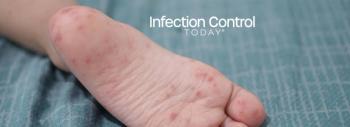
Keeping Classrooms Cleaner: Infection Preventionists Step into Schools

As seasonal viruses surge and recent outbreaks like measles highlight vulnerabilities, infection prevention experts are extending their reach into schools, recognizing that healthy classrooms are essential to healthy communities.
(This is the first of 2 videos in a series.)
Working in infection prevention and control (IPC) has traditionally meant focusing on hospitals, surgical centers, and long-term care. But over the past few years, some IPC professionals have been drawn to a very different environment: schools. With young children at home and firsthand experience of how easily illnesses leap from classrooms to living rooms, some infection preventionists see schools as a critical but often overlooked battleground. The COVID-19 pandemic put these issues into stark relief. Mask mandates, classroom closures, and strict hand hygiene protocols briefly pushed infection prevention into the school spotlight. Yet as time passed, many precautions faded, even though the need for strong IPC practices remains.
To learn more, Carole W. Kamangu, MPH, RN, CIC, contributing editor for Infection Control Today® (ICT®) spoke with Jordan Bastian, MPH, CIC, infection prevention consultant for MK Infection Solutions, at the Association for Professionals in Infection Control and Epidemiology Annual Conference and Expo held in Phoenix, Arizona, from June 16 to 18, 2025, about his presentation on this topic.
In schools, teaching kids proper handwashing is a recurring challenge. Many children rush through the process, barely wetting their fingertips, so reinforcing good habits is essential. Just as hospitals have “five moments” for hand hygiene, similar moments can be adapted to schools: after bathroom use, before eating, after blowing noses, when leaving or entering classrooms, and after touching shared surfaces. Because these behaviors aren’t yet ingrained, regular education and reminders matter.
“If I watch my kids wash their hands, they're getting their fingertips wet, and they're sprinkling, Bastian said during the interview. “However, I believe it's crucial that they receive proper education and that their behavior is reinforced to ensure they use the correct hand-washing technique. Certain moments matter; just like we have 5 moments of hand hygiene in the hospital settings, there should be at least 5 moments at schools as well. When you enter and exit a classroom at school after using the restroom before eating, when you're touching commonly shared surfaces as well, and when you use your tissue or blow your nose or cough as well. So, there are similarities in that way. But I also think that just because they are kids, some of that behavior is not ingrained, and so it's important to make sure that those things are happening. It's just the basics of IP.”
Adults in schools play a pivotal role too. Teachers and staff are in close contact with children all day and often help guide hygiene practices. Their commitment to consistent handwashing and sanitizing sets the tone and can either strengthen or undermine a school’s IPC efforts. Making sure schools are stocked with the basics—soap, sanitizer, paper towels, and effective disinfectants—is fundamental. Without these supplies, even the best training falls short, and desks and surfaces become easy transmission points, especially in colder months when students spend more time indoors.
As infections picked up again this year, many recognized that controlling the spread in schools directly supports broader community health. Bringing infection prevention expertise into classrooms is more than an extra precaution; it’s an investment in keeping entire communities healthier and workplaces running smoothly.
Newsletter
Stay prepared and protected with Infection Control Today's newsletter, delivering essential updates, best practices, and expert insights for infection preventionists.






